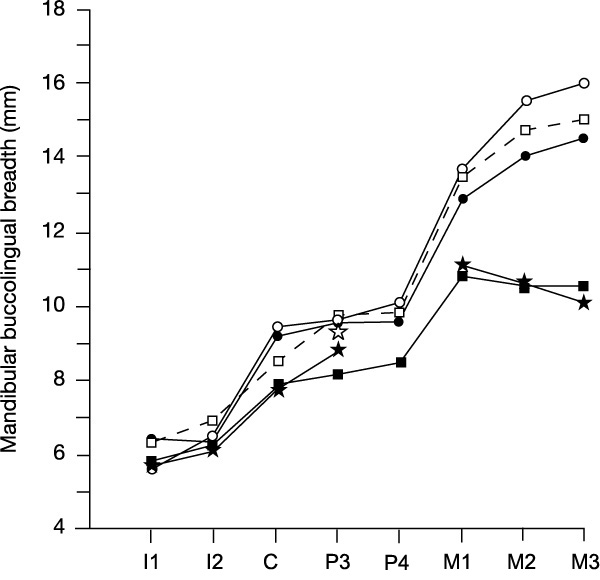December 07, 2004
Second opinions on "hobbits"
There seems to be increasing controversy about whether the skeleton(s) of small hominins found on the Indonesian island of Flores really represent a new species. The Athena Review sums up some of the issues as discussed over the past month. Science (subscribers only, alas) published a review of some skeptical positions by Michael Balter ("Skeptics Question Whether Flores Hominid Is a New Species", Science, Vol 306, Issue 5699, p. 1116).
Balter writes that
Now a small but vocal group of scientists argues that the skeleton dubbed Homo floresiensis is actually a modern human afflicted with microcephaly, a deformity characterized by a very small brain and head. Meanwhile, an Indonesian scientist who also challenges the skeleton's status has removed the skull to his own lab for study. But members of the original team of Australian and Indonesian scientists staunchly defend their analysis, and outside experts familiar with the discovery are unmoved by the critique.
The main challenge comes from paleopathologist Maciej Henneberg of the University of Adelaide in Australia and anthropologist Alan Thorne of the Australian National University in Canberra. Neither has seen the specimen itself, and as Science went to press, they had yet to publish their criticisms in a peer-reviewed journal. But Henneberg published a letter in the 31 October Adelaide Sunday Mail arguing that the skull of the Flores hominid is very similar to a 4000-year-old microcephalic modern human skull found on the island of Crete. And at a press conference on 5 November, Indonesian paleoanthropologist Teuku Jacob of Gadjah Mada University in Jakarta claimed that the specimen was a diminutive modern human.
One of the crucial issues is that there is only one reasonably complete skeleton, which makes it harder to argue against the view that it is a single deformed individual. According to the Athena Review,
Besides the female skeleton called LB1 ... only two other human fossils were reported in the Nature article proposing the new species. These include a single premolar , and a forearm bone (radius) found deeper down in Liang Bua cave. The forearm, based on its dimensions was claimed by Brown et al. (2004) as further proof that a local population existed of diminutive Homo floresiensis. But, as Henneberg also points out, the reported length of the radius of 210 mm actually corresponds to human stature of 151-162 cm, within the range of many modern women and some men.
For those of us who are metrically challenged, that's between 59.5 and 63.8 inches, or between 4' 11.5" and 5' 3.8".
I should also mention that the originally-reported quantitative data from the teeth of the Flores finds seem very consistent with the view that they are sapiens remains. According to the legend in the Brown et al. article, these are "Mean buccolingual tooth crown breadths for mandibular teeth in A. afarensis (filled circles), A. africanus (open circles), early Homo sp. (open squares), modern H. sapiens (filled squares), LB1 (filled stars) and LB2 (open stars)":

In my opinion, this is all a bit of a black eye for physical anthropology. If paleontologists (and Science magazine!) can't agree about such a basic question, something is wrong. I recognize that science progresses by controversy, and I suppose that the field will reach a consensus eventually, but (despite some previous instruction by the likes of Alan Mann) I remain surprised by how subjective this stuff seems to be. Of course, this might be a case like the Forster and Toth paper on IE phylogeny, where an apparent controversy in fact masks a genuine consensus among competent people that I'm too ill-informed to see.
At least this underlines how desperately speculative the reported "expert" discussion of this putative species' linguistic abilities was. On the other hand, the villagers of Boawae on Flores claim that if the right rituals are followed, perhaps all the uncertainty will be cleared up.
Meanwhile there seems to be a bit of a squabble over physical possession of the bones. There hasn't been much M(ain)S(tream)M(edia) coverage of the doubts about whether the find represents a new species or not, except in the context of a few stories about this argument over custody of the evidence.
Posted by Mark Liberman at December 7, 2004 11:50 AM